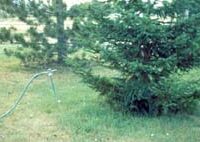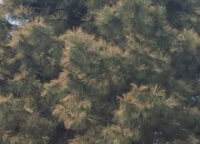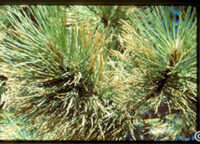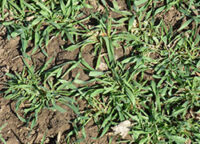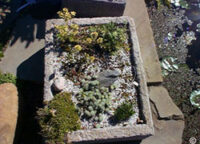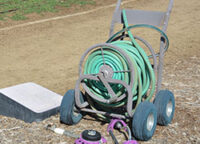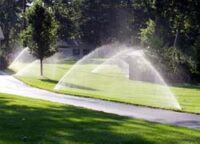- 02, 10, 2017
- Comments Off on 1751 – Fall and Winter Watering: During Drought
- By cwis672
1751 – Fall and Winter Watering: During Drought
Limited summer rainfall and water restrictions can deplete subsurface soil moisture. Upon digging, people may find little moisture at 8 to 12 inch depths where most tree roots are located. Should I water trees in the fall? Paying special attention to fall watering is important for trees to mature buds and enter dormancy in a […]
Take a Tour- 01, 19, 2017
- Comments Off on 1706 – Fall & Winter Watering
- By cwis672
1706 – Fall & Winter Watering
In much of Colorado, winters can have extended warm, dry, windy spells. Warm winters without snow appeal to people, but cause winter drought. What plants are at risk during dry winters? Trees and shrubs at risk from dry winters include recent transplants, evergreens and shallow rooted species such as lindens, birches, and Norway and silver […]
Take a Tour- 02, 15, 2017
- Comments Off on 2129 – Winter Desiccation of Evergreens
- By cwis672
2129 – Winter Desiccation of Evergreens
Typical Colorado Front Range winters include periods of warm, windy, low-humidity days with no snow cover and extended dry periods. What trees are prone to winter burn? Needled and broadleaved evergreens, especially last year’s transplants, are very prone to winter desiccation (“winter burn”) under these conditions. As the plants hold their leaves, they continue to […]
Take a Tour- 02, 15, 2017
- Comments Off on 2114 – Winter Browning of Evergreens
- By cwis672
2114 – Winter Browning of Evergreens
What is winter browning of evergreens? Brown evergreen needles, needle tips and branch tips are a common sight during the winter and early spring months in Colorado. These are all examples of winter injury usually caused by the drying winds, lack of snow cover, fluctuating temperatures, and low soil moisture that are typical of Colorado’s […]
Take a Tour- 02, 10, 2017
- Comments Off on 1719 – Watering
- By cwis672
1719 – Watering
Colorado’s eastern plains are a semi-arid environment. All newly planted trees and shrubs will need supplemental water. How much should I water my pots? Apply as much water as the size of the pot or root ball each week. For balled and burlapped stock, apply 10 gallons of water for each trunk diameter inch. For […]
Take a Tour- 02, 03, 2017
- Comments Off on 1607 – Cover Crops: Winter Rye
- By cwis672
1607 – Cover Crops: Winter Rye
Fall is one of the best times of year to plant cover crops to improve soil. Planting a cover crop is easy, and delivers many benefits. Why is winter rye a good choice for a cover crop? Winter rye grass is a popular Colorado cover crop, and it’s a natural because it grows well in […]
Take a Tour- 02, 02, 2017
- Comments Off on 2028 – Overwintering Container Plants
- By cwis672
2028 – Overwintering Container Plants
Containerized trees, shrubs, and perennials are subject to extreme cold, drying winds, and frequent freeze-thaw cycles in Colorado winters. Extra protection and care must be provided to ensure root and crown survival. When do I winterize container plants? In November, or when soils have cooled, homeowners with large pots should choose a protected area in […]
Take a Tour- 02, 02, 2017
- Comments Off on 1556 – The Importance of Fall Lawn Watering
- By cwis672
1556 – The Importance of Fall Lawn Watering
Should I water my Colorado lawn in the fall? Conventional thinking is that because evapo-transpiration (ET) rates are low and the turf isn’t growing much, it is OK to stop watering. However, historic ET and rainfall data for most of Colorado shows a need of 0.5 to 1.0 inches of irrigation per week during September […]
Take a Tour- 11, 29, 2016
- Comments Off on 1532 – Efficient Lawn Watering
- By cwis672
1532 – Efficient Lawn Watering
What happens to water you put on your lawn? Water can be used by plants, evaporate from the soil or percolate down through the soil to the water table. What is the most efficient way to water my lawn? The most efficient watering system for a lawn is to water it when it is dry, […]
Take a Tour- 10, 17, 2016
- Comments Off on 1222 – Preparing Raspberries for Winter
- By cwis672
1222 – Preparing Raspberries for Winter
Keep watering raspberries until the ground is frozen. Plants usually go dormant sometime in November and most of the leaves drop off. At this time give them a deep watering, down to the root zone, to prevent winter root and crown damage from desiccation. Mulch with dry leaves to help maintain adequate soil moisture. Prune […]
Take a Tour
